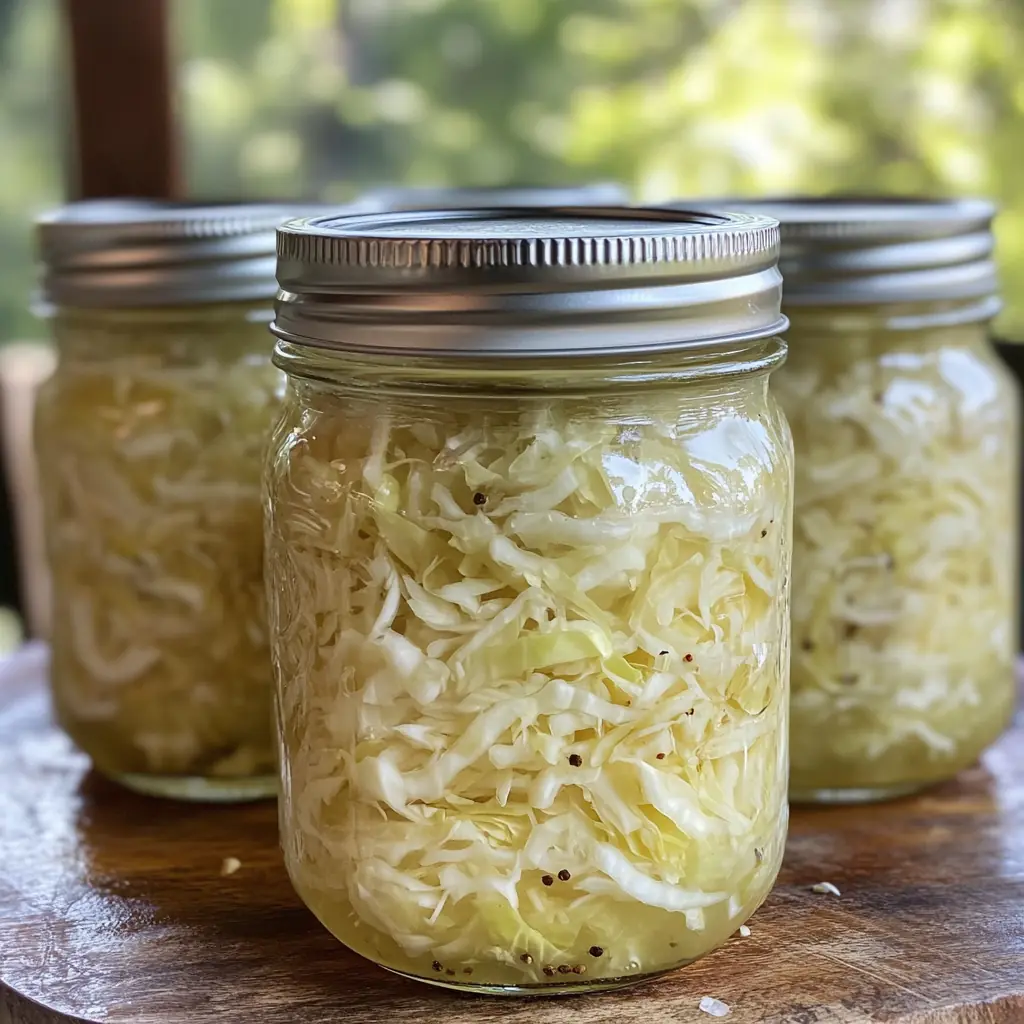
Canning sauerkraut offers a delightful and practical way to preserve the distinct flavor of this fermented dish. The process involves fermenting cabbage with salt, which not only enhances its taste but also extends its shelf life when properly canned. This method allows sauerkraut lovers to enjoy their favorite dish year-round, making it a staple for those who appreciate home-preserved food.
Understanding the steps involved in making and canning sauerkraut is essential. It requires minimal equipment and ingredients while delivering a rewarding product that can be used in various recipes. Canning not only locks in flavors but also ensures that one can enjoy the health benefits of fermented foods at any time.
With the right techniques and tips, even beginners can successfully can sauerkraut. Whether it’s for personal use or to share with family and friends, knowing how to preserve this tangy treat can enhance anyone’s culinary repertoire.
History of Sauerkraut
Sauerkraut has roots that trace back over 2,000 years. It is believed to have originated in ancient China, where cabbage was fermented in rice wine.
The method of fermentation spread to Europe, primarily through trade routes. By the 16th century, it became popular in Germany, where it was cherished for its flavor and preservation qualities.
Key Historical Points:
- Ancient China: Initial fermentation process discovered.
- Europe: Introduction through trade, particularly in the Middle Ages.
- 16th Century: Gained popularity in Germany and neighboring countries.
It played a crucial role in feeding sailors during long voyages. Its high vitamin C content helped combat scurvy.
In the United States, German immigrants brought sauerkraut in the 18th century. It became a staple in many households, especially in the Midwest.
Cabbage Varieties Used:
- White cabbage
- Red cabbage
Today, sauerkraut is enjoyed worldwide, appreciated for its taste and health benefits. Its preservation technique remains valued in canning and home cooking.
Benefits of Sauerkraut
Sauerkraut offers several health benefits due to its unique composition. It is rich in vitamins, especially vitamin C and K.
This fermented food is a source of probiotics, which support gut health. Probiotics help balance gut bacteria, potentially improving digestion.
Nutritional Benefits:
- Low in Calories: Sauerkraut is low in calories, making it a healthy addition to meals.
- High in Fiber: It provides dietary fiber, which promotes satiety and healthy digestion.
- Antioxidants: Contains compounds that may help combat oxidative stress.
The fermentation process enhances the bioavailability of nutrients. This means the body can absorb vitamins and minerals more effectively.
Potential Additional Benefits:
- Immune Support: The probiotics may bolster immune function.
- Weight Management: The fiber content can help with weight control by promoting feelings of fullness.
- Heart Health: Some studies suggest fermented foods may support cardiovascular health.
Incorporating sauerkraut into the diet can be simple. It serves as a flavorful side dish, condiment, or salad base. Its versatility makes it easy to enjoy while reaping its various health benefits.
Selecting Cabbage for Sauerkraut
Choosing the right cabbage is crucial for making quality sauerkraut. The ideal variety is green cabbage, typically known for its crisp texture and flavor.
Key points to consider:
- Variety: The best types include Savoy and Napa cabbages. They offer tenderness and flavor.
- Freshness: Choose heads that feel heavy for their size and have firm, tight leaves. Avoid any that show signs of wilting or browning.
- Size: Larger cabbages may yield more sauerkraut but can sometimes be tougher. Smaller heads often have better flavor and crunch.
- Seasonality: The best time to purchase cabbage is during peak season, typically late summer to early fall. This ensures optimal taste and texture.
Consider the characteristics:
| Factor | Ideal Choice |
|---|---|
| Color | Bright Green |
| Texture | Firm and Crisp |
| Leaves | Tightly Packed |
Purchasing from local farmers’ markets can provide fresher options. Homegrown cabbage often has superior flavor compared to store-bought varieties.
In summary, selecting fresh, high-quality cabbage is vital for successful sauerkraut. A focus on variety, size, and seasonality will yield the best results in the canning process.
